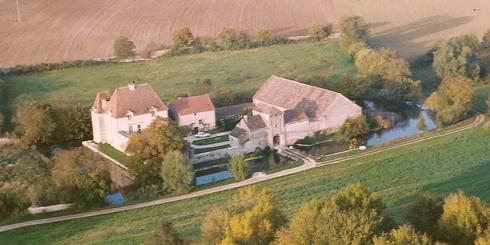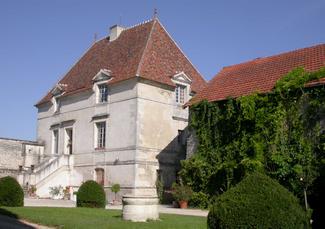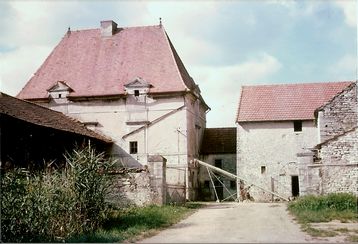
History of the estate

Aerial view of "La ferme du fossé"
"Le Fossé" stands as a set of buildings surrounded by a moat. The main entrance is through a XVth century gatehouse. In the courtyard protected by a wall with arrow slits stands a renaissance house. On the ground floor, there is a little vaulted chapel. The kitchen is vaulted too, and it has a central pillar.
The first mention of Le Fossé appeared in the archives of the Bèze chronicle.
In 1060 the owner was Guido de Fossato. In 1080, his name appeared as Guy 1er du Fossé.
In 1117, the owner was his son Guillaume. The estate was to stay in the family until the XIVth century.
In 1419, the owner was Henri de Savoisy, the archbishop of Sens, landlord of Le Fossé.
In 1438, the estate was bought by Thomas Buesseau, the Duke of Burgundy’s secretary and chancellor. His family kept Le Fossé until the XVII th century.
A major change took place during the wars of religion . Indeed, in 1591, Pierre d’Anglure, lord of Guyonvelle, who was a member of the catholic league, besieged and destroyed this “obnoxious and dangerous house” due to the fact that it was close to the strategic road from Dijon to Langres.

The Renaissance building
The house which one can see today was built by Claude Buessau’s children at the end of the religious wars. In 1626 the archives mention the fact that the lord of Le Fossé had the right to administer justice.
At the end of the XVIIth century, the estate became the property of the Bretagne family. On April 5th 1707, President Baillet, the owner of Le Fossé died, and on May 9th 1712, his widow, Marguerite de Bretagne asked her solicitor to conduct a survey of the property.
During the revolution the estate was bought by Charles François Dupuis, a member of parliament who played quite an important part in the events in Paris. He died at Le Fossé in 1808.

"le Fossé" in 1980.
In 1980, the buildings were in a very bad condition when the present owners bought them. The roofs had to be repaired, the moat which had been partially filled in the 1930’s dug again. This was a twenty year venture. The aim now is to open the house to public viewing as part of the French Heritage.